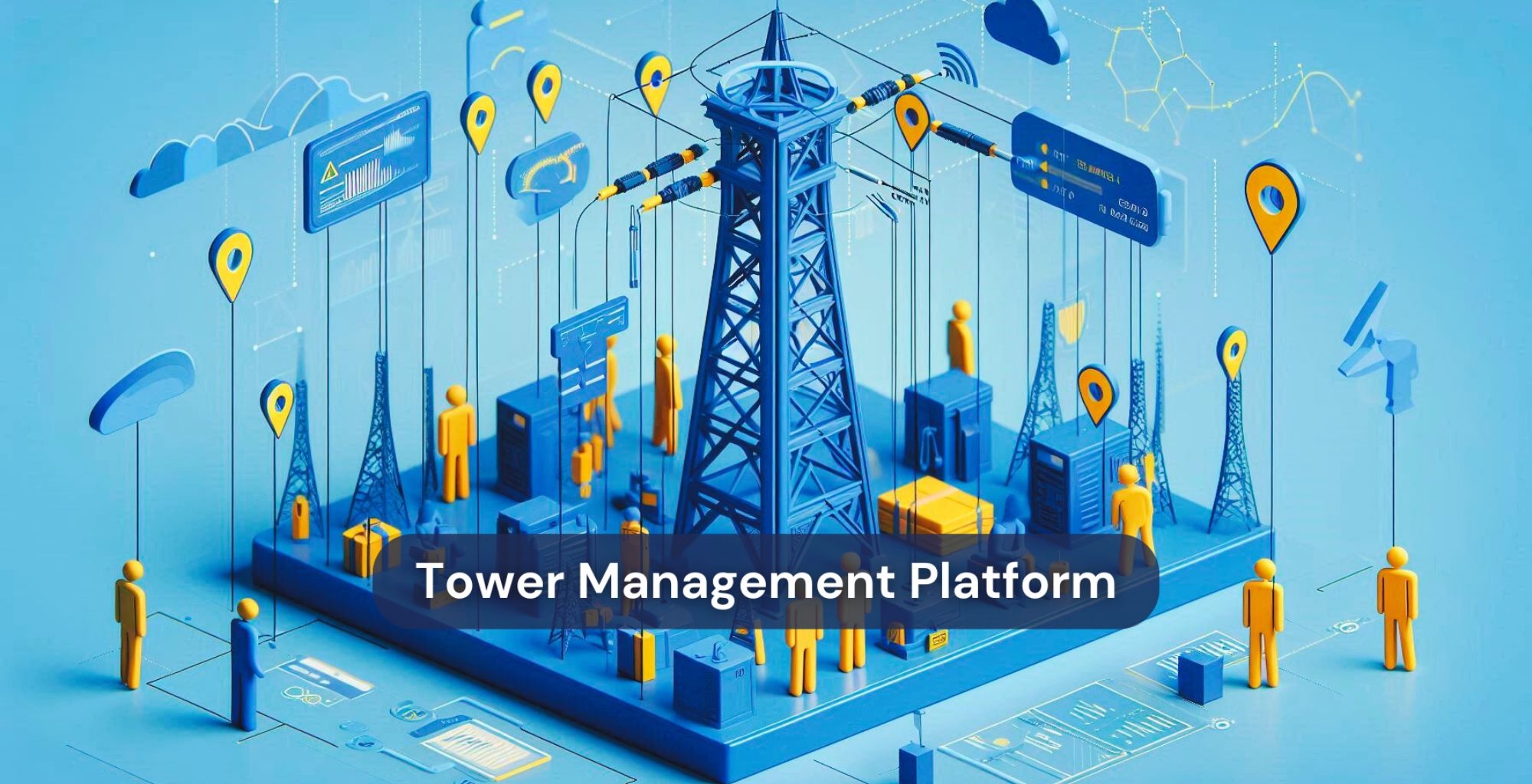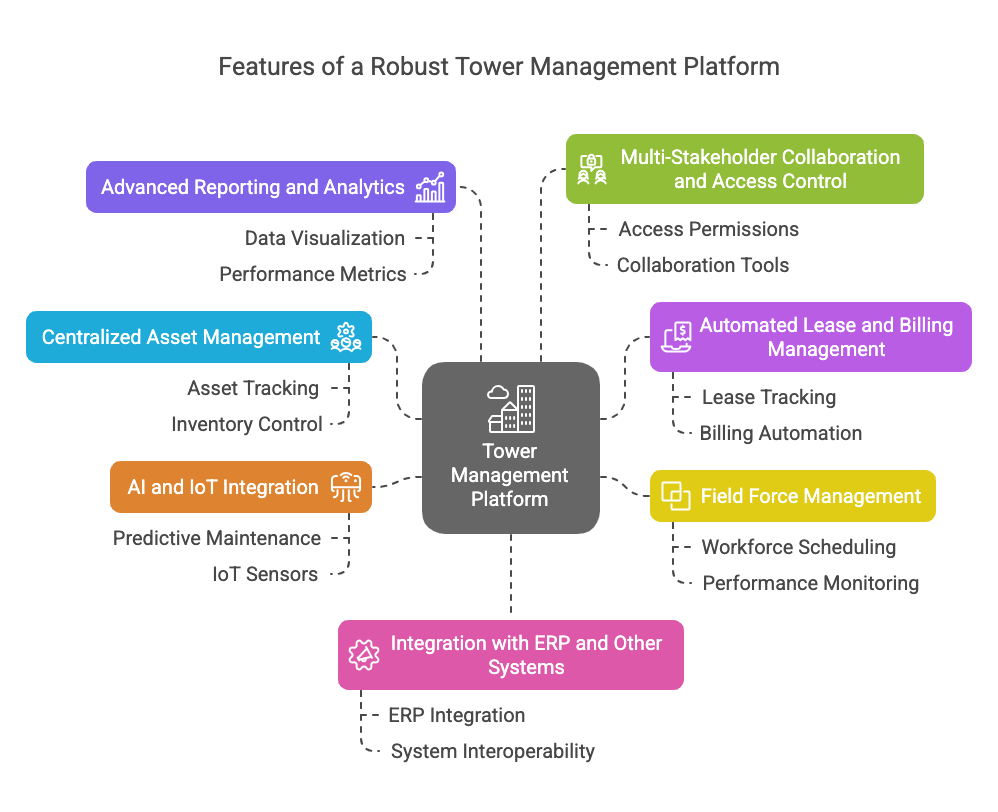The Smart Operator’s Guide to Tower Management Platform Features

Let’s face it—telecom infrastructure isn’t getting any simpler. With networks expanding rapidly and the demand for seamless connectivity higher than ever, managing towers has become a complex operation. That’s where a solid Tower Management Platform (TMP) steps in. But not just any platform will do. If you're a tower operator or infrastructure provider, you need something that does more than tick boxes—you need a platform that helps you run lean, smart, and future-ready. So, what should you really look for in a Tower Management Platform?
Let’s break it down.
Key Features to Look for in a Robust Tower Management Platform

1. Everything in One Place: Centralized Asset Management
Imagine trying to manage hundreds—or even thousands—of towers spread across regions without a single source of truth. Not ideal, right?
A great TMP gives you a centralized hub where you can track:
It’s all about clarity and control. When everything’s organized and accessible, decisions become faster and smarter.
2. No More Spreadsheet Juggling: Automated Lease & Billing
Leasing towers to multiple tenants means tracking dozens of contracts, deadlines, currencies, and taxes.
A modern TMP automates this for you with:
That means fewer errors, faster payments, and a billing process that pretty much runs itself.
3. On-Ground Teams, On Point: Field Force Management
Your towers are only as good as the teams maintaining them. With the right tools, field technicians can work smarter—not harder.
Look for features like:
The result? Quicker response times, fewer breakdowns, and lower costs.
4. Think Ahead: AI + IoT for Predictive Maintenance
Why wait for something to break when you can fix it before it fails?
With AI and IoT, TMPs can:
This is proactive maintenance at its best—saving you time, money, and headaches.
5. Insights That Actually Mean Something: Reporting & Analytics
A TMP without analytics is like flying blind. The right platform turns data into action.
Look for:
Good analytics help you stay agile, make better investments, and justify every rupee spent.
6. Work Better Together: Multi-Stakeholder Access & Collaboration
Tower operations involve a mix of teams—from engineers to finance, tenants to regulators. Everyone needs access—but not to everything.
That’s where role-based access comes in:
The payoff? Smoother workflows and faster issue resolution.
7.Play Well with Others: Seamless Integration
Your TMP shouldn't live in a silo. It should connect easily with the tools you already use. That includes:
Everything should work together—no duplicate entries, no data silos.
The Bottom Line
Choosing the right Tower Management Platform is no longer optional—it’s essential. The right platform helps you:
And with AI and IoT reshaping the game, investing in a future-ready TMP isn't just smart—it's necessary. So, whether you’re scaling up or just tired of the chaos, it might be time to level up your tower game. Ready to simplify your tower operations and future-proof your infrastructure? Explore how a next-gen Tower Management Platform can transform the way you work—boost efficiency, cut downtime, and stay ahead of the curve.
Talk to our experts today or request a demo to see it in action.



